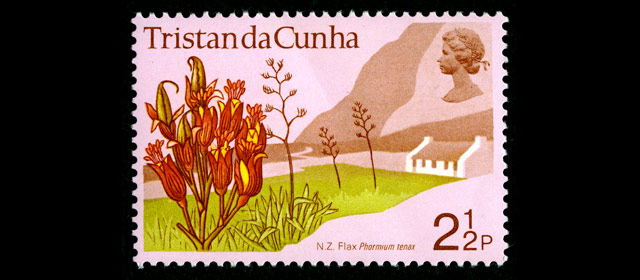Story summary
Early introductions
Botanists returning from James Cook’s voyage to New Zealand were the first to take native New Zealand plants to Europe, in 1771. Mānuka and the yellow-flowering kōwhai were among those that became popular, and were cultivated in public and private gardens. Flax was grown in some places for its fibre. By 1800, New Zealand plants could be found in Edinburgh and Moscow.
Tuatara (lizard-like reptiles), kiwi and other native birds were shown at London Zoo from the mid-1800s.
Plants overseas
New Zealand plants grow well in places overseas where the climate is similar to that in New Zealand. New Zealand flax grows in Japan, nīkau palms can be found in Los Angeles, and a large pōhutukawa tree stands in the city of La Coruña, in northern Spain. In Britain some natives, particularly hebe and cabbage trees, grow well and are popular with gardeners.
Wild plants
Some New Zealand plants have become weeds or pests once overseas. For example, on the island of St Helena, flax that was once grown commercially has run wild and is threatening local native plants.
Birds and insects
Two types of New Zealand parakeet are kept as caged birds in Britain and the United States. It is no longer legal to export them from New Zealand.
In Britain, New Zealand stick insects are sold as pets. Germans can buy wētā from pet shops to take home.
Some creatures that live almost unnoticed in New Zealand have become pests overseas. These include two wood-boring beetles, which attack damp wood in houses, and a mealybug and fungus that live in flax.
Invaders
The planarian flatworm, which probably arrived in Britain hidden in potted plants, has become a threat to pastureland.
New Zealand mudsnails became established in Europe in the 19th century. They probably got there as stowaways in sailing ships' water barrels. The snails have spread through the waterways of Europe and the United States, eating the food needed by local animals.





